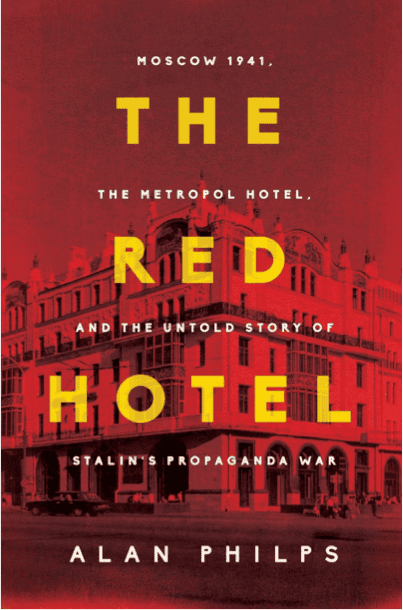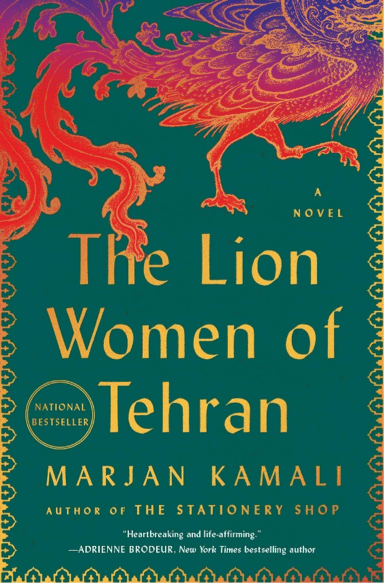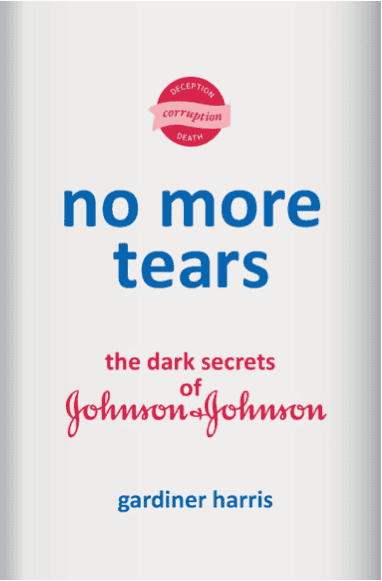
The Red Hotel: Moscow 1941, the Metropol Hotel, and the Untold Story of Stalin’s Propaganda War
by Alan Philps
“Interestingly, the public was fed propaganda from the Western journalists who acted as mouthpieces of Russian propaganda, stating that Russia and the West would work together after the war. Consequently, it shocked the public when they realized that the communist leaders were found to be hardly less dangerous than the Nazis had been.”
In 1940, during World War II, Stalin imposed stringent censorship on foreign correspondents living in Russia. He suppressed all negative media coverage and forced the 50 British and American journalists and their translators to provide only positive news coverage in a very successful disinformation campaign. This was accomplished in a variety of ways. One was by providing journalists with a lavish life style, another was sanitizing all articles written by the journalist, regardless of how trivial, and yet another was restricting travel. Journalists only obtained information via the same Stalin-approved sources. They could not travel to speak to or interview anyone. Meetings and events were carefully orchestrated. Draconian measures were taken by the Russian Gulag against anyone who did not comply.
The legendary and luxurious Metropol Hotel housed and confined all foreign journalists. Unavailable to the local population, the hotel provided hot water, decadent food such as unlimited caviar, liquor, and cakes. Meanwhile, the starving local Russians were forced to exist on a daily ration of 400 grams of black bread during the famine.
Russian translators, primarily women, risked their lives attempting to reveal the truth. Some who were discovered providing honest information were sent to prison. Philps provides eye-opening vignettes about some of the journalists, mostly men, but some women, as they struggled with censorship and dubious information.
The book reveals how the press was complicit about the censorship even after the World War II ended.
“In fact, the whole press pack and their employers kept the dirty secret quiet after returning home after the war ended. The one exception to the journalistic code of conduct was Paul Winterton, who worked for the News Chronicle and the BBC overseas service: he offered his editor a tell-all article, but the newspaper refused to run it.” Red Hotel is both a fascinating and harrowing account of the power Stalin yielded and how he controlled information to the outside world during the War. Outstanding complements to this enlightening book are the novel Gentleman in Moscow by Amor Towles, and the non-fiction Red Notice by Bill Browder, both of which I reviewed several years ago. They are among my favorite books.

The Lion Women of Tehran
by Marjan Kamali
“’Lion women,’ or ‘shir zan’ in Persian, refers to fierce and brave women, often used to describe those who are strong and unstoppable in their fight for rights and freedom, particularly in the context of Iranian women’s activism.”
I didn’t plan to read this novel since I’ve read so many other engaging, similar books. However, several trusted reader friends urged me to read it so I did. What a moving, poignant read it turned out to be, and I am grateful for the recommendation. It’s a gripping, character-driven story set in Tehran beginning in the 1950’s to 2022.
As children, seven-year-old Homa and Ellie become close friends, and they share their ambitions for becoming “lion women.” However, their circumstances and consequently their relationship changes. I don’t want to provide too much information because it would affect your reading experience.
The plot examines gender roles and cultural norms in the Iranian religious society, challenging these roles and traditional expectations, and the struggles and/or successes of doing so via individual vignettes of the women and their relationships. Each woman’s heartfelt story exemplifies her remarkable courage and resiliency, along with the importance of women’s friendships. This would be an excellent book club selection with so many themes and characters to discuss.

No More Tears: The Dark Secrets of Johnson & Johnson
by Gardiner Harris
A “must read” expose concerning a trusted company, you will never be complacent regarding medical prescriptions or medical devices again after reading this book and becoming more aware of what occurs behind closed doors.
For decades Johnson & Johnson, known for providing such famous products as Johnson’s Baby Powder and Johnson’s Baby Shampoo, was considered an ethical and trustworthy company by the public. However, Harris, a well-regarded investigative journalist, shines a light on the shocking corruption, deception, and drive for profit over the public’s safety practiced by the company.
In the 1970’s, scientists found asbestos in J&J’s Baby Powder and linked talc use to ovarian cancer. J&J launched aggressive publicity campaigns to discredit the research. J&J actually acknowledged the findings but publicly denied it. False testimony was provided along with manipulated data and incriminating documents were destroyed.
J&J sales representatives ruthlessly convinced physicians with fraudulent, manipulated data that their fentanyl product (Duragesic and Nucynta) was less prone to abuse than oral opioids, and was not as addictive as similar drugs like opium. High-risk patients were targeted to extend treatment duration, encouraging addiction. Clinical trials for dementia indicated there was little benefit and increased risks of strokes, heart attacks, and death. Yet J&J pushed the drug on the unaware public.
Apparently, many medical devices are approved via a loophole, 510(k), by claiming similarity to devices approved before 1976, often without being tested on humans. This allowed J&J to rush potentially dangerous devices to market. For instance, a metal-on-metal hip implant similar to failed 1960’s designs, was deemed dangerous. Internal testing showed it shed toxic metal debris and failed at high rates, but J&J misrepresented data to the FDA and physicians. “Executives knew those products would disable and kill. The clinical trial for Pinnacle violated almost every sacred rule regarding the ethical conduct of human clinical trials. Emails reveal that executives knew exactly what they were doing and joked among themselves about how fully their actions contradicted the central tenets of the company’s credo.”
J&J created a new form of estrogen delivery for women, the patch, which would be easier to remember to use on a weekly basis and would provide a lower dose than the oral contraceptive pill, thereby reduce chances of blood clots and stroke. Unfortunately, the clinical trials showed the estrogen patch, PHI-017, delivered to women in the study was almost four times the estrogen level in the oral pills. The company decided against conducting additional clinical trials and redesigning the patch, “…willfully deceiving the FDA about the patch’s estrogen problem…In 2004, worries about the number of deaths and strokes caused by Ortho Evra had grown. So regulators in New Zealand insisted on seeing the results of PHI-017. Once they saw the results, New Zealand regulators refused to approve Ortho Evra because evidence from the clinical trials showing a higher rate of estrogenic side effects than COC’s (combined oral contraceptives) is now supported by additional AUC data from pharmacokinetic PHI-017.” AUC stands for Area Under the Curve and is a parameter of the plasma level time curve that measures the extent of drug bio-availability.
Another horrifying example is the Prolift Mesh kit, a vaginal mesh kit for pelvic organ prolapse. Internal studies and inventor warnings indicated high rates of erosion, pain, and complications, yet J&J sold it without FDA approval and concealed the risks. There were so many examples of disturbing conduct by the company, I could barely continue reading about J&J’s egregious behavior!
The FDA was also complicit, possibly caused by J&J’s enormous influence and power. It failed to enforce illegal marketing practices, and allowed devices to be approved without sufficient testing or create recalls when escalating injuries occurred.
J&J motivate physicians to prescribe their drugs based on profit, payoffs, and/or perks such as luxurious vacations, and not the needs of the patient. The representatives also aggressively push ineffective new drugs on the public, when older, more affordable drugs are as effective. The deceit goes on and on! How many times does your health care provider prescribe antibiotics for trivial issues? And are they new, recently-approved drugs when “tried and true” drugs could be as effective?
From Gardiner Harris’s website:
He “previously served as the public health and pharmaceutical reporter for The New York Times and is now a freelance investigative journalist. He also served as a White House, South Asia, and international diplomacy reporter for the Times. Before that, he was a reporter for The Wall Street Journal, covering the pharmaceutical industry. His investigations there led to what was then the largest fine in the history of the Securities and Exchange Commission.”
Dear readers, if you think this book is a worthy read and raised your awareness, please share with other readers.
Adult book reviews are by Susanne Dominguez.
